
The Lynx effect: Marketers need to help business managers focus on the long term.
Yes, the world is experiencing rapid change and it’s accelerating. However with the average tenure of management in companies constantly getting shorter, retained knowledge is being lost and long term plans are often abandoned before they have a chance to deliver returns. Short termism is rife, sales managers will always tend towards a quick fix to get orders in this month, and financial controllers will naturally be looking for new ways to reduce spending.
Yet the bottom line is it's the businesses that invest year after year in building brands that create the most wealth. The chart below compares the S&P 500 index performance, the blue line, with businesses that own stronger brands, the green line. It proves the businesses that invest in brand building ultimately generate more wealth for shareholders.
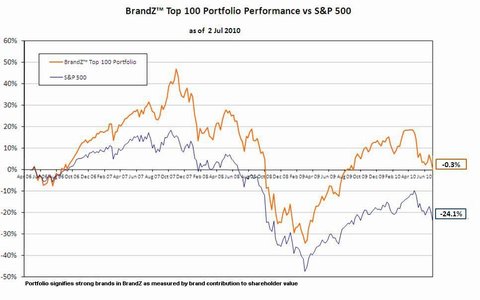
Leading brands outperform the sharemarket
A great example of how building a brand over time makes more money is to look at the work BBH in London did for Unilever. The creative leap of saying a deodorant could make a man more attractive changed the dynamics of the market category. The ad agency took an also ran product to a profit powerhouse over 20 years with the one consistent creative idea; “The Lynx effect”.
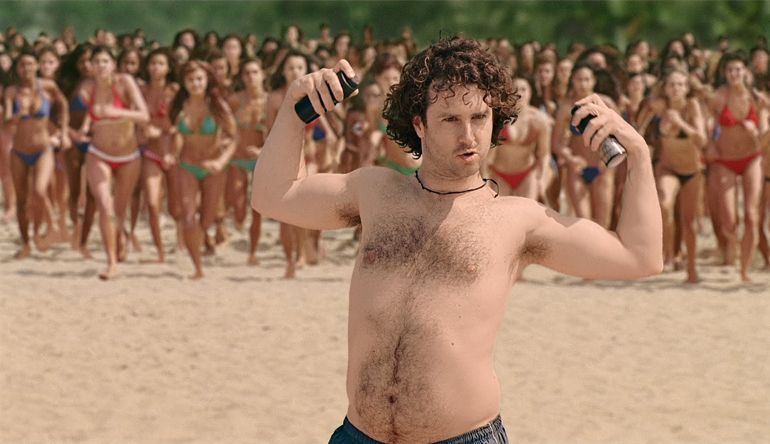
Founder of BBH Sir John Heggarty says “All we did [back in 1995] was change the thinking. It’s more than a fragrance – anyone can make a fragrance – it’s actually about the marketing.”
"I fundamentally disagree that advertising is just selling people stuff they don’t want. I believe that you have to create a competitive advantage with creativity. It seems obvious but I spend so much of my time trying to convince marketers to be more creative.”
Marketing is more art than science says the global advertising guru
Last week in Sydney Heggarty told a room full of businesspeople and advertisers “you all want it to be a science, to get the equation right and go home. But selling stuff has never been a science, it’s about persuasion and it’s an art. It will never be a science. It’s important to remember that we’re all creative. If you’re in marketing, you’re creative.”
Branding today is worth more to a business than ever before
Here is the proof for the finance department. According to Millward Brown Optimor’s analysis, in 1980 virtually the entire value of an average S&P 500 company was comprised of tangible assets (computers, factories, inventory, etc). By 2010, tangible assets accounted for only 30 to 40 percent of a company’s value. The rest is intangible value, and about half of that intangible portion, close to 30 percent of total business value, is attributed to brands. Does your CFO treat your own brand as your single biggest asset?
It truly is the era of creative destruction. ROI marketing is one of the few tools left that can still make a difference and consistently drive business growth. It's worth investing in your brand if you want long term returns.
Read MoreHow many ads do we see a day? Do you remember any?

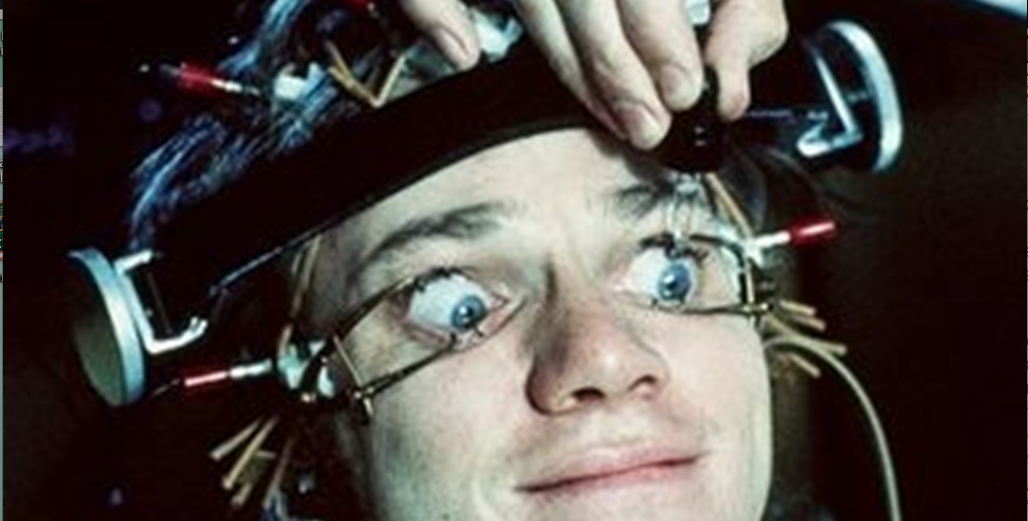
"We've gone from being exposed to about 500 ads a day back in the 1970s to as many as 5,000 a day today."
Jay Walker-Smith, Yankelovich Consumer Research
Hard to believe? Well, if you include the brand label on your undies when you put them on in the morning to the box your new tube of toothpaste came in that evening you can conceive you are exposed to branding messages thousands of times a day. This researcher also counted all the junk mail you probably don't read. But 5,000 ads?
A more reasonable figure for the marketing messages you see and hear daily is probably in the hundreds. Think about your average day, from the traffic report brought to you by Bob Jane T-Mart, the bus back for some show at The Star to the flyer for a Thai massage thrust in your hands as you walk past the poster for all-you-can-eat ribs on Wednesday nights. Then a barrage of down down retail ads on the TV during My Kitchen Rules, sponsored by some diet program. And those meet women in your area now!! ads on the side of your Facebook page late in the evening? What’s that about?
Whether it’s 300 or 3,000, we see so much that we register very little – and remember even less.
So if you were advertising your business don’t you think it might be wise to be distinctive and consistent enough to be recognised for something? Of course you would. So why is it most marketing communications is neither memorable nor consistent? Why doesn’t Qantas still call Australia home?
Why would an insurance company kill off its leading actors?
I can understand why an insurance company is killing off a 3 year ad campaign featuring Rhonda who now has a full time gig in a soap, but why did they drop the memorable jingle earlier? What have they got left to ensure we remember their brand? Who was that insurance company you may well ask? Ahhhhh, Allianz? No, when I double checked it was AAMI. You'd be forgiven if you haven’t been paying attention. Instead of keeping the sign off, "Luckyyyy, your with AAMIeeee", the ads no longer end with the sound of the jingle we’ve grown familiar with over 15+ years. Wonder why?
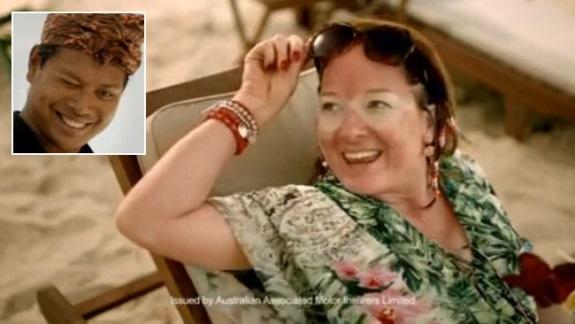
The average tenure of the CEO of an ASX 200 company is around 4-5 years*. The head marketer changes almost as often. Those brand managers on their way up move through more often, leaving behind their mark like my pug does on street posts. Which explains why the labels on all those Lindemans wines changed so often over the last decade. Southcorp then Treasury have destroyed so much brand equity because there were no custodians with a strong thread of brand DNA. Then each new agency wants to make its name, often at the expense of the advertiser.
Why will anyone remember your brand?
I was part of the team that created the "Which bank?" campaign for Commonwealth. It outlasted my time at Saatchi and survived a change of agency, despite their attempts to get rid of it. Brand building is like compound interest, you add a bit every year. And after a while it’s worth a fortune.
'Oh what a feeling' to be a copywriter for Toyota, knowing whatever the concept you come up with, the last 25 years of ads ensure the jump at the end will guarantee recognition by a half asleep viewer. Which is why the most successful marketing campaigns are the ones with legs. They go on and on like a Duracell battery.
It’s a fine balance between testing the new and stretching the offer without breaking the elastic brand. Some brands get it right. While there have been numerous small tweaks and occasional lapses, the VB can and the Coke dynamic-ribbon have survived decades of personnel changes. Less strongly managed brands seem to change annually. So when clients tell me they are getting tired of their campaign or their tag line or the font of their logo, I like to check if it’s busted first.
Sure we live in a world of rapid change, however, it’s more likely business survival and growth will come from product and service innovation and smarter marketing techniques, not from a new typeface. It may be a better strategy to refresh and re-launch rather than completely start again if you want to hold on to some rare customer goodwill. You’re doing well if they already have a small place for your brand pegged out in their cluttered head space.
Mortein tried to kill off Louie the Fly, but after over 50 years the public would have none of it. As John Laws used to say, when you’re on a good thing, stick to it.
Here's a Louie the fly ad from 1962
* Source: A Booz & Company study shows 23.5% of CEOs of ASX 200 companies left in 2011. Median tenure is 4.4 years and falling.
Read MoreThe top 20 valued brands in 2014
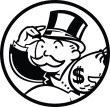
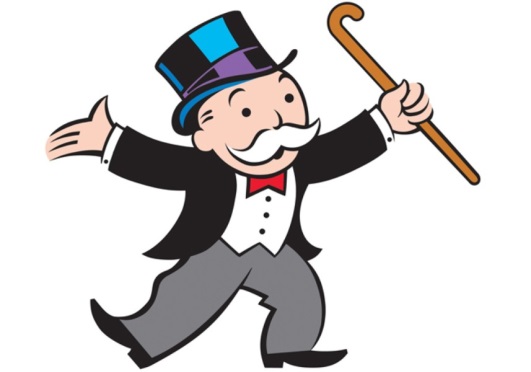
The world's most valued brands include some surprises. Coke is no longer it, in fact in the last year the brand value of Coca Cola has actually shrunk by 1%. Might not sound like much, but we are talking US$50million. A few more great ads like they used to make could have made a big difference to the bottom line. While there's a lot to lose there is a lot to be made by building a brand.
Innovation and marketing build brand value
Consider the year on year growth of Samsung as it continues to invest in product innovation and marketing. Now the number 2 in the world by brand valuation, Samsung increased it's value by US$20 billion over the last year. Coke slipped from number 9 to 12. Check out US telco Verizon, up from 10 to 5. Expect to hear more from them in Australia.
What are the highest valued Australian brands?
The value of a brand can be greater than the parts and isn't necessarily a reflection of the relative size of the business. While Australia's largest listed company by share market value is BHP, it doesn't rate on the scale for the book value of it's brand. The business with the highest valued brand in Australia is Woolworths. Woolworths sold $21 billion of food and liquor last year. The Woolworths brand is now ranked just outside the top 100 global brands and is valued at US$10.8 billion.
Racing up behind in second place is a newly invigorated Telstra which has re-invested, refreshed and relaunched it's brand over the past couple of years. The several millions spent on marketing has been rewarded, Telstra jumping 34 spots globally with an increase in brand value of over US$2.2 billion.
The banks brand valuations aren't the same as their market cap, but the shifts in brand value are a leading indicator of performance. ANZ is the smaller of the big 4 banks yet it has had a higher brand valuation for the last few years. But it's slipping, which helps give us an idea of which bank will grow faster in the coming years. ANZ, NAB and CommBank are all losing brand value and Westpac is climbing as they leverage stronger brand appeal to hold and grow customers.
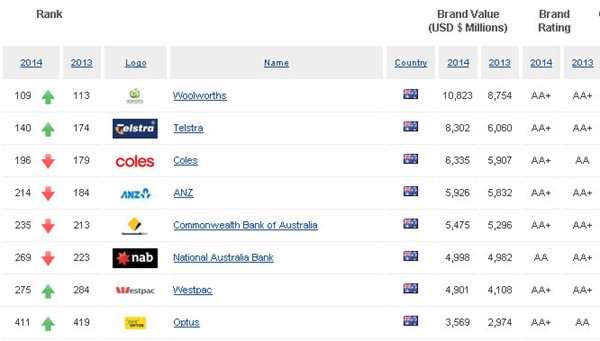
So when you're in the boardroom discussing the pros and cons of discounting to drive sales or investing in marketing, show your peers what a difference a brand makes to the bottom line.
Read MoreThe business benefits of a strong brand
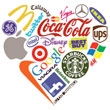
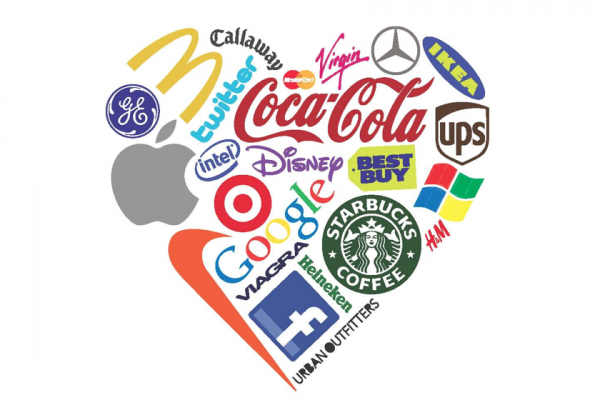
Remember just over a decade ago when IBM only sold big computers? Today most of us have more computing power on our smartphone and IBM is a consulting services business. UNO helped IBM make the transition to a service provider to mid-sized Australian businesses with a 4 year content publishing programme.
Many brands are having to change to survive
A few years ago if you wanted to find a business service you looked up the Yellow Pages. And if you wanted to make a call when you were out of the office you had to find a pay phone. It's amazing when you stop and think about how much the Internet has changed the way we do business.
Some once mighty brands like Kodak and Darrel Lea have disappeared, while others have successfully transformed what they offer. Have you taken the time to reconsider what your brand stands for in today's competitive market?
A brand is more than a name and logo
Your brand is what the public thinks you stand for. How you present your business shapes how your brand is perceived. Your brand is how your customers feel about you – the impression you make. It's how you look and how the way you speak. It's the unique way you reveal yourself to customers, from your choice of words to the typeface and colours you use.
If your business has been around for a decade then what your business does may no longer be well represented by what your brand is representing. Today's brands are distinctive yet flexible. Consider wWhat do Apple, Google and Virgin have in common? An ability to sell products and services across virtually any category by leveraging strong brand images that represent values that can be stretched as innovations are brought to market.
Strong branding is a smart business investment
Disciplined brand creation and consistant brand marketing is proven to deliver returns. Once you've differentiated your brand positioning, today you need to remember sales is no longer a linear pipeline, the power now lies with the customer. So for your brand to create wealth it needs to be discoverable across multiple touchpoints. With consistancy, the ROI from building a differentiated brand isn't just financial.
A strong differentiated brand enables the business to:
• Overcome competition based purely on price
• Prevent or slow decline of sales
• Hold on to existing customers
• Build sales leads
• Change perceived quality of your product
• Revitalise customer appeal
• Change company culture and boost employee morale
• Enter new markets
• Speed up product acceptance and trial
• Morally discourage competitors’ salespeople
• Raise capital more easily
• Sell a business more easily
See UNO's proven Formula for Growing Challenger Brands.
Read MoreWho owns the world's best known brands?

"Brands are intangible assets and account for, on average, 75% of the value of a company."
– Blake Deutsch
Investors don't value what businesses make. The sharemarkets around the world have placed the most value not on production, rather they value the power of brands. Most share prices are a reflection of the future earning ability of a brand. The brands people most recognise also get the most votes from investors.
Just ten global companies own a surprising number of the world's best known brands.
From cat food to confectionary, shampoo to fragrances, each of these companies use their marketing skills to create shareholder value. As well as the dairy brands you probably associate with Nestle, the Swiss company also owns some of the most renowned brands in other diverse categories. Most people are surprised to see just how many categories just ten global corporations are active in. (View on Pinterest):
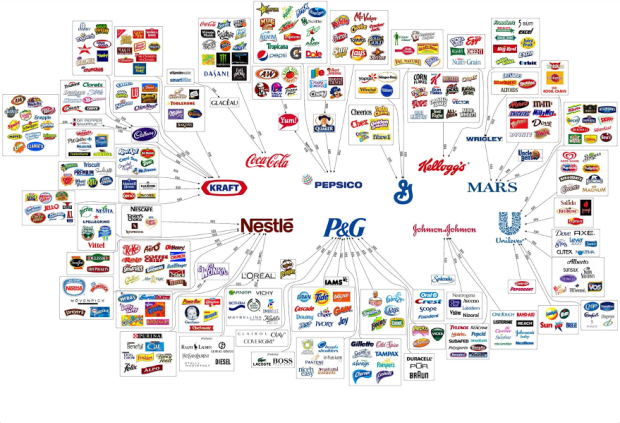
See larger image on Pinterest.
The big benefit of differentiating your brand is pricing power
The same marketing disciplines that are used to by Nestle to differentiate Kit Kat are leveraged by Nestle in other categories like fragrance. Georgio Armani Beauty is a Nestle brand, with Cate Blanchett its public face. Differentiation is why Nestle can charge a premium for perfume, Purina pet food and Nespresso coffee capsules.
In an Internet enabled world, where prospects can literally buy anything from anyone, it is now essential to differentiate your brand. It is differentiation that will ensure long term sustainable and profitable business.
Big brands have the world covered, which opens market niches to the nimble
The good news for challenger brands is the majors have slimmed down their portfolios over the last decade to concentrate on a smaller number of brands they can manage globally. So if you now apply the same proven brand marketing disciplines in niche markets you can most likely do so knowing there will be less competition from big global players.
As for Armani the fashion brand, it's still a family owned business with Georgio, it's 78 year old founder, still at the head. See how UNO grows Challenger Brands, including a number of successful Australian family businesses, just download our free eBook.
“Brands are intangible assets and account for, on average, 75% of the value of a company.” - Blake Deutsch - See more at: http://www.r-co.com.au/brand-building-for-business-success/#sthash.XGEEw6MT.dpuf
Who tweets about brands?
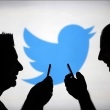
Technology companies get the most tweets
If Twitter users are image shapers, setting the trends in awareness in our society, it follows that marketers want to see their brands tweeted. Research by Nielsen has for the first time shown which brand categories are most tweeted, and who is doing the tweeting. Technology companies lead, followed by restaurants.
How to get people tweeting about your brand?
Be seen on TV. The age old adage, fame is the name of the brand game is underlined by the fact the brands people tweet about are the brands seen on what is still the world's mass market medium – TV. Perhaps this explains why the biggest brands still invest in TV advertising, it's the one medium that they can still use to shape mass opinion.
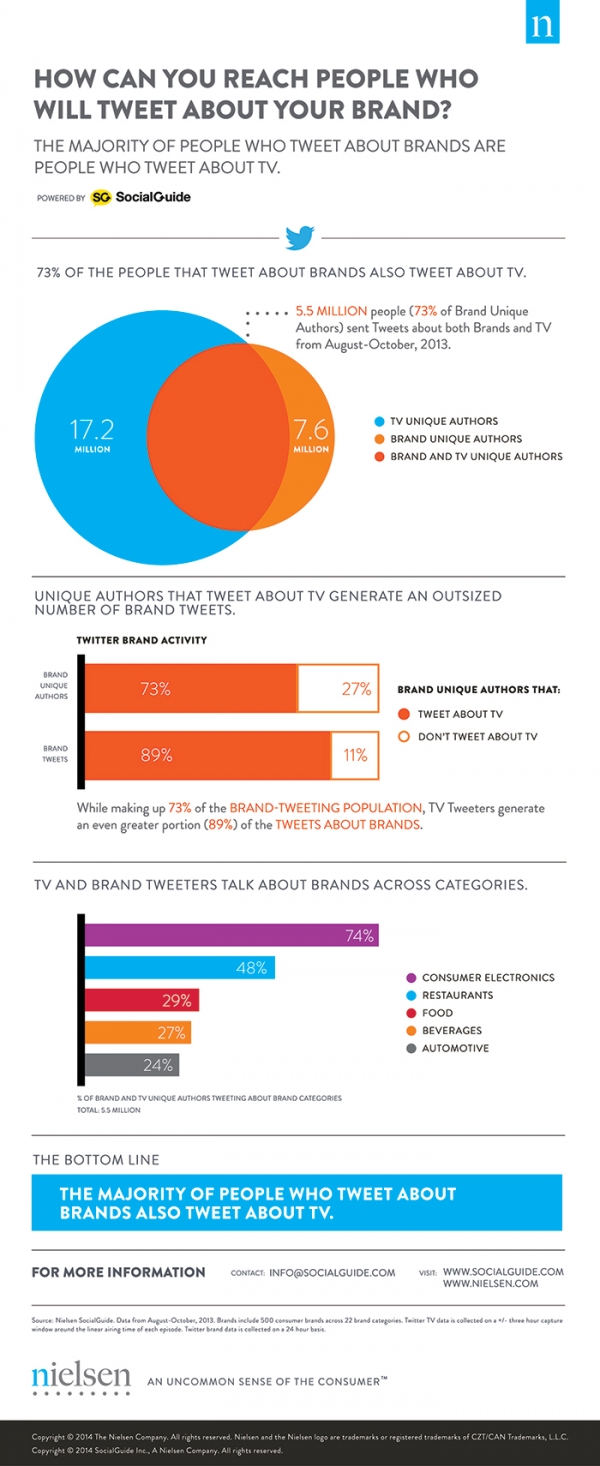
What Australians look for when shopping online

Myer missed the post-Christmas online retail rush, and it was BIG. On 1 January, The Australian Retailers Association put an update out on expected post-Christmas sales from Boxing Day to 14 January to be $15.1 billion.
You may have read Myer's site was down for over a week. CEO Bernie Brookes told shareholders it wasn't a big deal because online represents just 1% of Myers sales. I'd be wary of investing in a retail business that doesn't realise the importance of e-commerce.
6.4% or retail shopping is done online
In the year to November 2013, Australians spent $14.6 billion* on online retail. This level is equivalent to 6.4% of spending with traditional bricks & mortar retailers. Some discretionary spending categories are already well into the double digits for online sales. Despite Bernie's spin about the insignificance of his own online sales, in fact Myer's business plan has a 5 year target for online sales of 10%.
I've been brushing up on online retail best-practice
Those retailers that did get a share of the online post-Christmas sales rush now have stats on what worked for them. Fortunately we can all learn from what Australians did over Christmas thanks to a survey by Credit Card Selector of online gift purchases. Here are some of the insights on what shoppers are seeking online...
Why Australians purchased Christmas gifts online rather than instore
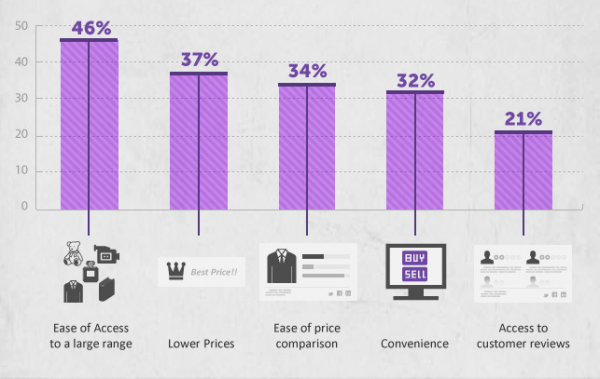
How shoppers find online stores
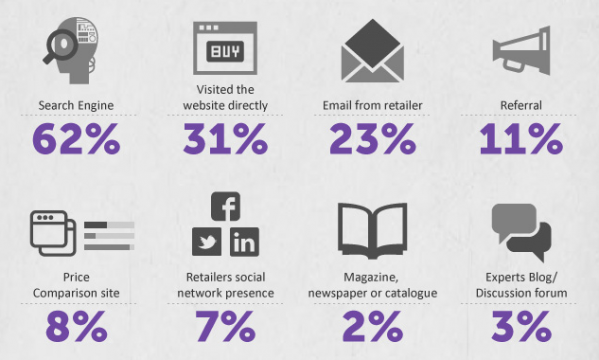
What gifts shoppers bought online in 2013
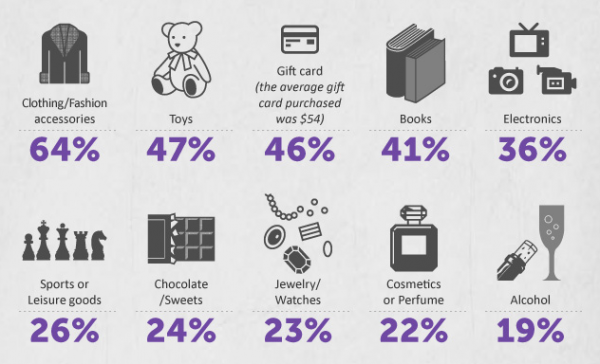
What would make an online shopper buy again
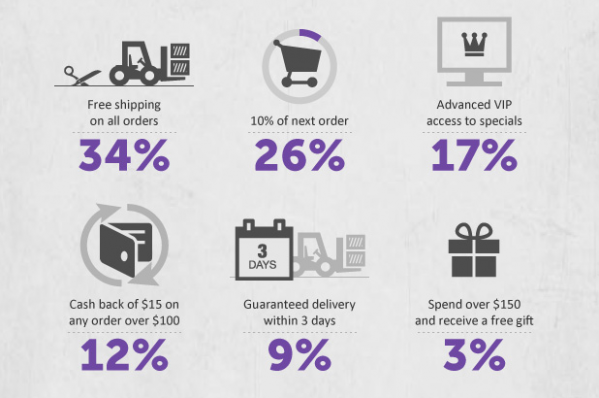
* Source: NAB Retail Index
Read MoreHow can you measure a marketer's contribution to the business?

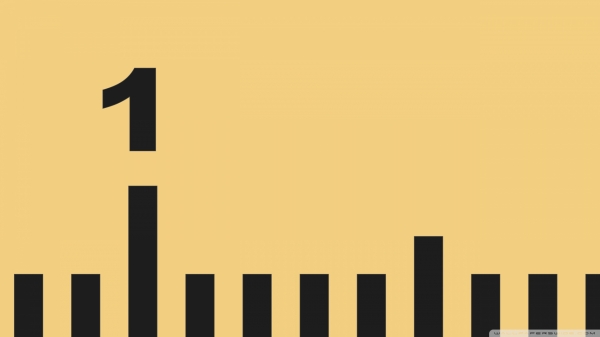
CEOs and business owners often ask me what’s the best way for them to measure my contribution to their business. The business of business has never been more complex, yet we are actually in an era where marketing is one of the few levers left that management can actually control to engage customers. And that’s how a marketer is best judged – by the improvement of the brand’s engagement with customers.
Marketing is all about the customer. The customer
Don’t just take my word for it.
A survey of CMOs across 92 countries reveals consensus – the most valuable measures of marketing’s contribution are in the areas of engagement and “brand health”. Health being a bit of a catchall word for the grab bag of KPIs that show how much customers recognise you, like you, value and understand what you stand for. They also ranked the capabilities that will be more important to marketers over the next 5 years.
KPIs for measuring marketing effectiveness
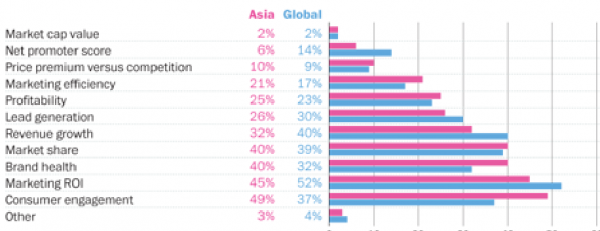
Source: The Marketing 2020 Report, Effective Brands survey of 10,000 professionals across 92 countrie
The capabilities most important for marketers in 5 years
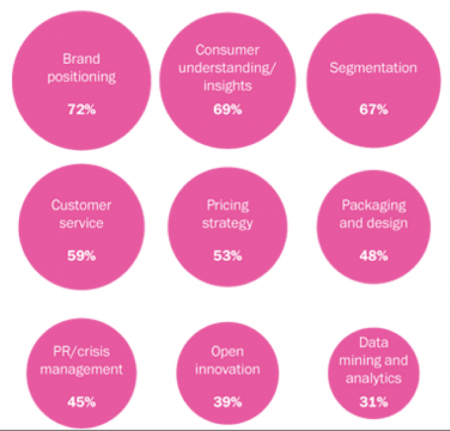
How to manage the 9 biggest marketing challenges
Here is how we manage the biggest marketing challenges today:
- What do you stand for?
Define your differentiated positioning in the market that not only you have a passion for, enough prospects will pay for. - Know your customer
Base your story on what customers genuinely care about that you can deliver. The features with benefits that ideally are unmet by competitors, or unknown to prospects. Think like a challenger brand. - Define your target audiences
Don’t attempt to sell something to everyone. It’s the era of niches within subgroups. Align your messages to what each customer target cares about. - Customer service
Never over promise, always over deliver on expectations.See some of the proven ways to foster customer loyalty here. - Pricing strategy
Remember pricing is a two way lever, framing value to maximise profit is the game, not cost plus pricing, that was the era of mass market production line manufacturing. Be nimble and exploit unique profit opportunities from short term market mispricing. Then find another. - Packaging and design
Sell the sizzle. Creativity and a consistent brand image increases cut through, recall and engagement and helps you command a price premium. Bad ads are bad for business. Stand out and apart. Safe isn’t just boring, it’s high risk. - Be prepared for a crisis
The Internet now makes everything public and places the power in the customer’s hands. Have a plan. Tell the truth, you’ll be outed if you don’t. Make sure you know your legal position with social media. - Innovate for growth
Or die. Big business struggles to change, this is the great advantage for those who aren’t market leaders. Become a challenger brand by zigging while the category zags. See the bottom line benefits of innovation as determined by AIM, they are significant. - Data
We are now in a digitised world. The companies that have the most data on people have the power to own their custom. Whether you are a manufacturer, distributer, service business or retailer, the business that makes the most of data will control the money.
Read More
Email outperforms social media for new business, by far


McKinsey has just published some research I wrote about last year on the ineffectiveness of social media for customer acquisition. While marketers have increasingly jumped on the social media bandwagon, the stats show the effectiveness of Facebook and Twitter as a method of acquiring customers has remained flat. In contrast, email’s share of customer acquisitions has shot up over the last three years by 700%.
% of customers acquired by channel
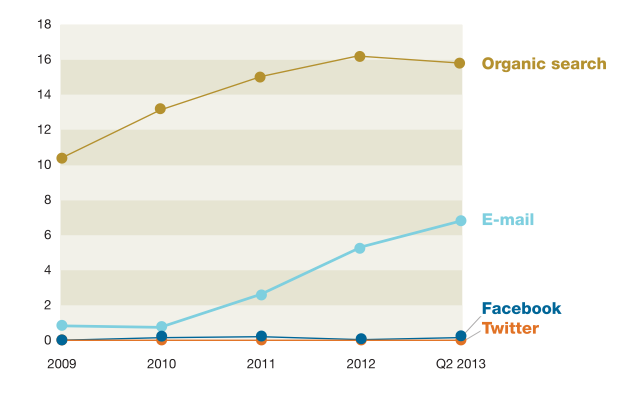
Source: Custora, E-Commerce Customer Acquisition Snapshot, 2013. McKinsey iConsumer survey
The tip for challenger brands here is to zig when the others zag. The more your competition and every other marketer swamp social media with activity, the less likely you will be noticed. Personally, every time I now venture onto Facebook I am actually getting rather tired of being targeted by advertisers for diets, wine and dating.
Facebook is out of favour for new business
In the quest to deliver Facebook shareholders a profit, marketers are being encouraged to spend big. Meanwhile Facebook users are beginning to move on. The statistics show us those marketers who continue using email can expect 40 times the customer acquisition than from Facebook and Twitter combined.
That's not to say I'm recommending mass email blasts. The frequency of spam in your inbox is why marketers now have to be more discerning in what they send and who they send it to. For instance, Qantas has a frequent flyer database of 10 million members, slicing and dicing and and segmenting offers with hundreds of individual creative executions.
When Email marketing, remember what’s in it for the customer
Most of us hate spam. Prospects and customers however generally appreciate receiving an email when it concerns something of value to them. Depending on your category, different days of the week achieve higher responses. And of course, research on brand recall has proven the more creative your message, the more your brand will be remembered.
So make sure your email campaigns are well crafted and you offer a real benefit aligned to a genuine customer need. In other words, smart marketing not spam.
Read MoreHow Private Label hollows out brands

Australia is unique for the oligopolistic power of just two supermarkets. Coles and Woolworths have 80% market share of an industry valued at A$80+ billion.
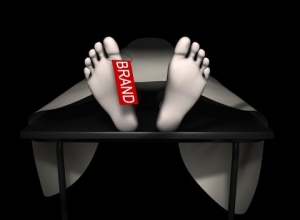 In the UK, the two major chains Tesco and Sainsbury have 48% and the US equivalent is just 20%. Consequently when our retailers brought in management from the UK to apply the successful Private Label model developed by Tesco and Asda they did so with the potential to have a significantly bigger impact on our market overall.
In the UK, the two major chains Tesco and Sainsbury have 48% and the US equivalent is just 20%. Consequently when our retailers brought in management from the UK to apply the successful Private Label model developed by Tesco and Asda they did so with the potential to have a significantly bigger impact on our market overall.
Private label is no longer cheap generic Black & Gold commodity lines, it's the key to the retailers growing profit at the expense of both brands and producers. Whether you are in the FMCG business or a service business, the Private Label strategy is one that threatens every business as the company with the most customer data gains ownership of the sales process.
Global FMCG brands now struggle to turn a profit in Australia
In the last year major FMCG brand owners like Unilever and Nestle have publicly lamented their lack of power in this country to compete with the oligopoly's own brand agenda. While we have more supermarkets per capita than the US and nearly 3 times as many as the UK, the 10,000 Australian independents have so little share and such disparate distribution requirements for fulfilment they offer brands little scope for profitable scale.
Most shoppers don't realise they're being had
The trend to consumer demand for more brand choice and gourmet choices is being matched by Woolworths by it's purchase of Macro Wholefoods and roll out of Thomas Dux stores. Not only have Woolies out-merchandised the Harris Farm model, they've done an even better job in wine.
Together, Coles and Woolworths have over 50% of the liquor market, not just through retail store brands like Dan Murphys, Liquorland, 1st Choice, Porters, Theos and Vintage Cellars, but the big online database driven direct marketers like Cellarmasters and Langtons. Here is how Choice sees it:
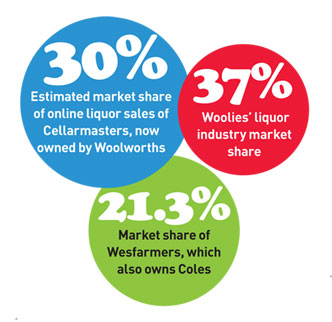
This dominance has enabled the two majors to dictate what brands you can buy. They have delisted most small vineyards and substituted them with a cynical excercise in facadism. There is a plethora of over 240 Private Labels masquerading as boutique wines giving the impression of choice. They are merely made-up attractive wine labels stuck on bottles of mass produced vin ordinaire. From Abbey View to Willowbrook, see the list of fake wine brands for yourself.
Now they are using their data Intelligence to segment and market everything from Private Label credit cards to health insurance. For instance, they use loyalty card tracking of grocery purchases and the knowledge that if you eat red meat you are a better actuarial risk to target the insurance sales process. What insurance company can compete with this big brother view of Australians?
How does a business compete with this onslaught? A study by international branding expert Professor Mark Ritson of Melbourne Business School gives some insight...
The formula for Private Label success
• Lack of perceived differentiation between brands in a category
• Lack of value innovation of incumbent brands
• Increased proportion of price promotion activity
• Available production capacity
• For me products
• Smart retailers
• Competitive retailers
• Concentrated retailers
The power of the retailers in this market allows them to demand more price promotion from brands, which leaves little in their budgets for brand building marketing campaigns or new product innovation. In no time the brand values are hollowed out, leaving the category ripe for Private Label substitution.
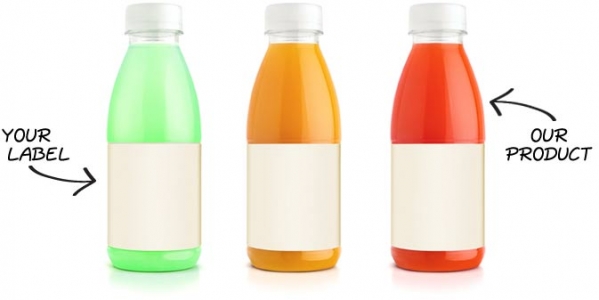
The Seven stages of Private Label dominance
Stage 1: Price-based generics (Home Brand, Black and Gold etc)
Stage 2: Copycat (Penguin vs Puffin biscuits)
Australia has passed here and well into the next stage.
Stage 3: Good, Better, Best (Tesco Value, Tesco, Tesco Finest)
Stage 4: Flanker brands (brand extensions to attract brand 'switchers')
Stage 5: Category leaders (Sainsbury Extra Special Tea Bags)
Stage 6: Non exclusive (expanding beyond the store)
Stage 7: Legal monopoly
The supply side to killing brands
The no-name supplier is offered a carrot to become the stick that wacks the known brands.This business is often an existing maker of their own known brand line. Why would a Heinz for instance supply Woolies Private Label baked beans? This is what attracts them:
- Usually opportunistic origins
- Often based on excess capacity utilisation
- Any contribution over variable costs of production is seen by management as good
- Less profit... but still profit
Where it leads is usually not so positive. Here is what happens when the no-name supplier exceeds production capacity:
- Increased production costs for same or less profit
- Cannibalisation of existing branded product
Gradual strategic 'split':
- From brand builder to PL supplier
- Internal resources get utilised
- An implicit strategic change
Change of business from:
- Brand builder / innovator / consumer focus to
- PL supplier / cost cutter / business customer focus
Private Label and the weaker brands are consolidated:
- As PL grows weaker manufacturer shares decline
- Brand fights brand – not PL
- To maintain brand and shelf presence, 'lesser' products become 'propped' up with disproportionate costs
- Resources become further diluted
- Finally, once mighty brands are de-listed by the duopoly
- The retailer approaches a new potential supplier for PL, and so it all repeats
How high can Private Label go? (How low will brands fall?)
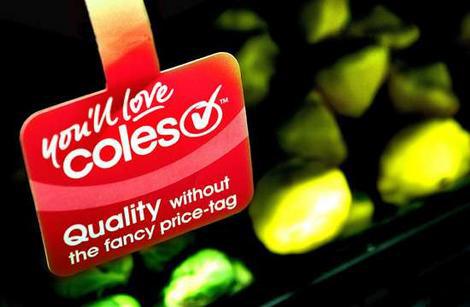
Private Label share in Australia today
23% is current floor
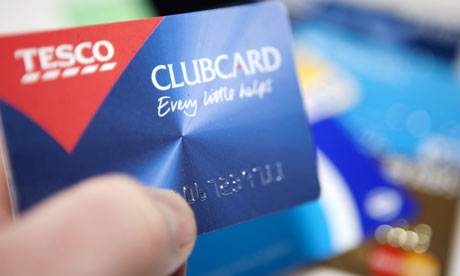
The UK is in the middle
50% Private Label
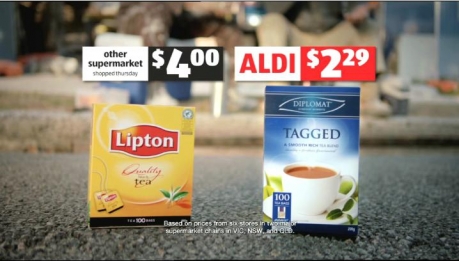
Theoretical ceiling
95% of product in Aldi is Private Label
Trust me, I'm in advertising...

10 years ago when I started my own agency, an account director mate left the industry to become a real-estate agent. I remember thinking it was the only place he could go that had a lower standard of trust than we advertising types.
Last week he told me it was a great move financially, he reckons 99% of people in advertising are really smart, whereas he’s happy competing with the 99% of real estate agents he’s found to be really ordinary. If we are that smart, why can’t we lift our own profile, beyond the bottom of the heap for trusted professions?
Trust in advertising? This is not an oxymoron.
Unfortunately, the perception of our industry is on a par with used car salesmen, yet our legal obligations, indeed our personal liability, dictate our practices are squeaky-clean.
In Australia, like most things, our industry is regulated and kept on the honest path by a series of laws and regulatory bodies. You wouldn’t know it.
The 2011 senate inquiry into outdoor advertising standards found only 0.01% of ads were found to be bad, i.e. sexist, likely to offend or straight out untruthful. Yet when prompted on ABC radio, the senator leading the inquiry said that if we don’t clean up our act under self regulation, he’ll "pull out the big stick and regulate" us.
Would you trust a politician to decide whether marketers are trustworthy?
In Europe, clergy are experiencing a decline in confidence levels and politicians are in last place. Our peers don’t rate much better than we do here, with over half of Europeans surveyed* saying they don’t like journalists, marketing specialists or advertising experts.
*Source: GfK Trust Index in spring 2010
I can understand why journalists are suddenly on the nose – the phone hacking scandal at Rupert's tabloid News of the World has in the words of one shareholders action group "laid bare a striking lack of stewardship and failure of independence." The board had been unable to set a "strong tone-at-the-top" about unethical business practices.
Australians generally are a trusting lot. When it comes to believing what our fellow citizens say, Australia on a trust index score of 92 ranks ahead of the U.S. (78.8) and U.K (61), just behind New Zealand (102) and way behind China on 120.9.

Source: ASEP/JDS data bank 2011
So where do Australia’s “ad people” sit on the trust index today?
Who we really trust is no real surprise:
1. Paramedics
2. Firefighters
3. Pilots
4. Rescue volunteers
5. Nurses
At the bottom of the pile are
41. Taxi drivers
42. Real estate agents
43. Car salesmen
44. Politicians
45. Tele-marketers
Source: Readers Digest Austrlalia’s most trusted professions poll 2011
Before you think ad madmen aren’t so bad after all, the only reason they’re not last on this list is because they aren’t included in the survey. Tele-marketers are the closest category, so let’s just accept advertising and marketing guys are way down there. How did we end up down at the bottom with pollies, and what do we need to do to elevate our role to a similar level of respect as other service providers like engineers, doctors and architects?
Advertising first took off in America in 1800s when snake oil makers discovered the return on investment of promoting something of little value with amazing claims in the press. In Australia last year the most damage to our credibility was the public complaints about the posters advertising Advanced Medical Institute’s cure for under performance in bed. It was bad enough they were bad ads, the real breach of trust was the pitch was a fraud. Most of those with a desire to last longer in bed were overcharged for a treatment that generally didn’t deliver on the promise.
As a professional I feel we would be better off refusing to work for these types of people. It didn’t harm Bill Bernbach’s career when he told prospects he wouldn’t accept their business if their product didn’t live up to his standards.
(Glenn Mabbott would like to declare his interest as a sitting member of The Communications Council’s Policy Committee, which aims to raise industry standards through the Accreditation Scheme. UNOmarcomms was one of the first independent agencies in Australia to gain accreditation.)
Are today’s retail ads bland, bland, bland?

Are today’s retail ads bland, bland, bland? This was the question posed by AdNews last week after Dick Smith launched a new brand style ad campaign. If you missed it, here is a cut down of my contribution to the debate.

Dick Smith was an innovator
He built a new category with advertising and brochus that gave Australia’s cardigan wearing tinkerers access to an Alladin’s cave of electronics stuff to play with in their garages. What proved Dick really clever was his ability to sell his growing challenger brand to Woolworths and then go on to innovate time and again. With Australian Geographic and then his Australian Made products, Dick was a natural at creating marketing campaigns that resonated with the public mood of those times.
Contrast this with another retail innovator of Smith’s era, Gerry Harvey. Gerry also made his first million in his early twenties with ads for whitegoods and appliances that yelled, “Why pay more?

Is Gerry a clever Dick?
Gerry didn’t sell his business and continues to be the biggest retail advertiser in the country with ads that follow the same tired formula of thirty years ago. We all know the pitch: yell loud enough and people will rush in to grab a bargain. Except increasingly we’ve learnt to treat those ads as repetitious nagging. We’ve moved on to better retail experiences, which are likely to be online.
It’s time the majority of retailers looked at the current crop of retail innovators, like Net-a-Porter that has just released a new magazine iPad app that makes shopping an exciting, contemporary experience. Or this great campaign in Korea for Tesco’s challenger brand, Home Depot.
This article first appeared in AdNews, 21/10/11
A lateral way to increase retail shelf space: use a billboard
Watch this short video of how Tesco challenged the number 1 retailer in Korea by creating a virtual store.
What’s the next killer app?
The latest stats show Australians are the number 2 adopters of smartphones. And this year, Tablets and iPads are set to outsell mobiles, Australians will buy 1.2 million of them*. In the last couple of years the fastest increase in marketing online has been with using video, so we believe the next big thing for marketers will be video over smart mobile devices.

Ask us about the app factory that will let you make the most of video content. (Soon to be launched by UNO with our partners at Mass Media Solutions.)
*Telsyte mobile device update 2011.
73% of CEOs think marketers "Lack Business Credibility"
According to damning research by the Fournaise Marketing Group, marketers are not the business growth generators they should be.*
The gist of the findings of an Asia wide survey of CEOs is that management believe their own marketing departments are in a world of their own. They believe marketers speak in jargon and are not contributing any value to the business. From my experience you can’t blame most business owners for thinking this way, especially in Australia. Too few businesses have ever had a good marketer sitting round the table at board level, championing the power of marketing to generate wealth.
Marketers need to talk the language of business outcomes
As in “how can marketing get a better return on investment”. Otherwise marketing will remain a misunderstood black art not worthy of the attention of three quarters of CEOs. The vast majority of businesses will thus miss out on the huge opportunities that insightful marketing can deliver when it is woven through the entire business process.
Meanwhile there are a handful of businesses doing better than the rest because they have value-adding marketers on the team. These marketers, obsessed with return on investment, are recognised as an integral part of the senior management team. They are helping their businesses punch above their weight in the following ways…
- Overcome competition based purely on price
- Prevent decline of sales
- Hold on to existing customers
- Build qualified sales leads
- Change the perceived quality of a product
- Revitalise tired brands
- Boost staff morale
- Speed the development of new markets
- Speed product trial and acceptance
- Help businesses raise capital more easily
- Build the value of a business for sale
ROI marketing works
For 100 years Coke has proven it, people from first world countries to third choose Alabama’s black sugar syrup even though it doesn’t taste as good as Pepsi’s. That’s the power of consistent marketing. Perrier taught us to pay more for mineral water than petrol. Branson has convinced Australians to fly Virgin despite having a deplorable record of taking off late, (and you still have to pay for your sandwiches). And thanks to marketing Apple has built a brand that is hugely profitable, marketing has enabled them to sell often inferior spec’d products at a premium to specialist manufacturers like Nokia and HP.
CEOs needn’t fear marketing speak. Business decision makers who embrace marketing with an open mind can still enjoy a sense of control by implementing a test and learn approach. Any marketer worth listening to understands the value of having the results of their work tracked. If it isn’t measured, it isn’t managed. A marketing program that IS managed WILL deliver better results than mindlessly sticking to what the company has always done, or jumping blindly into the latest thing.
ROI Marketing can make a big difference to any sized business, in any category
So what can ROI marketing do for you? My experience has shown me whatever the category, from Watties baked beans to Brita water, Splash Clinic cosmedical treatments to City Index CFDs, a test and learn marketing program can turn good businesses into category leaders.
Read MoreTwo thirds of Australians are using social media. Two thirds of those use it to decide what to buy.*
Social Media Marketing (SMM) is growing, the latest figures show Social Media is becoming a mainstream influence in the purchase decision process. UNO are members of the Australian Interactive Media Industry Association. Together with Sensis, AIMIA surveyed 803 Australian consumers and 1,944 Australian businesses to determine how social media channels are being used. 50% of corporations now have a social media presence, the majority on facebook. Just 14% of small businesses use social media.
Proportion who have Social Media presence

Proportion who have Social Media presence

Social networking site usage by age and gender

Here are 10 ways you can make more of Social Media in your marketing communications mix:
- Start now for free. If your business is consumer facing, get a facebook page, it’s free.
- For B to B, skip facebook. Focus where business decision makers are active. Join LinkedIn. Follow relevant associations and groups, join industry forums and post comments on articles.
- Share your knowledge. Your business is your passion; tell it how you see it where you can add value to a conversation. No need to sell, just build your credibility as an expert and you’ll be increasing the standing of your businesses.
- Don’t post as anonymous. Out yourself. The CEO of a solar hot water manufacturing company follows chatrooms where plumbers share advice. His comments to tradies‘ questions demonstrate he’s in touch with his market. I suspect his competitors are unaware such forums even exist.
- Put someone in charge of your Social Media. Empower a person within your business who is passionate and keen to have a dialogue with customers. If you don’t have anyone internally, outsource.
- Tweet. Reinforce your position as an industry expert by tweeting and re-tweeting about relevant content that others have shared.
- Blog. Blogs and reviews have a big influence on buying decisions, with 63% of social media users reading reviews before making a purchase decision.
- Be regular. Respond quickly.
- Integrate social media. Integrate content with your promotions and product campaigns. Measure. Track.
- Video is the future. It’s the fastest growing area online because it’s easy to share. It’s not enough to post a television commercial on YouTube because no-one will look for it. Be creative, film an interview with an expert, or shoot a behind the scenes glimpse that showcases something you do well.
Social Media can deliver a measurable ROI. No wonder businesses are spending 5% of their marketing budgets managing and creating content for social media.
The good news is that any business that has collected data on their customers is sitting on their own potential gold mine. Rather than spend money trying to appeal to new prospects by running press or even online ads, you will get a much better return on investment by adding some intelligence to the way you manage your data.
Give your CRM some Data Intelligence
Most data is in such a mess it offers little insight to business owners. To turn it into a powerful tool to enable you to communicate with your customers requires a clean, intelligently organised database.
The place to start to release the value from the mountain of data you already have is to give it to an expert to wash it.
You’d be surprised how many emails and addresses are wrong, repeated or out of date. You can’t begin to measure response rates until you know the data you have is clean. It’s better to measure the response from 10,000 real customers than to assume you’re sending offers out to say 30,000 on a dirty list.
Once you have a clean list, your data then needs to be structured and categorized with the aim of maximising its usefulness for marketing purposes. There are then some things you can do straight away to not only deliver quick profits today, but also set you on the path to delivering what customers will want in the future.
Fast profits can come from testing and tailoring offers to:
- up-sell, getting customers to buy more valuable products from you
- cross-sell, encouraging them to add something else to what they usually buy from you
- increase purchase frequency, by building loyalty and giving them more reasons not to be tempted by your competitors
So get the experts in quick smart to professionally clean your data so you can secure the future of your business. Let those who continue to spend big to tempt new prospects pay the price.
Read More
What will it take for retailers to stay in business in this rapidly changing global economy? Futurist Ross Dawson commented in a recent blog that if you expect your business to look the same in 10 years as it does today, expect to be out of business.
Who’d have thought ten years ago that Woolworths would be the biggest owner of pubs and bottle shops today? Constant change is the only way to stay competitive, which explains why Woolworths just bought Cellarmasters for $340million. Kevin Luscombe recognises the future includes database marketing, Cellarmasters “will enable us to serve a whole new customer segment in terms of the direct marketing channel.”
eCRM drives online sales
Cellarmasters has the largest databases of drinkers of premium wines in Australia. For any competitor to stay in the premium wine business they’ll need to at the very least match the way they apply an eCRM program to their database.
Once a database has been professionally cleaned, you can start to mine your database and build a series of profiles of your customers. Using that intelligence will deliver a better ROI on your marketing. You’ll get a better result cross selling Pinot Gris to customers who are heavy purchases of Sauvignon Blanc. With profiles of your customers it becomes practical to promote a 20 case limited offer Coonawarra cleanskin, you simply email your regular purchasers of Cabernet. With data intelligence, while you offer a bonus with purchase of single malt to spirits drinkers, beer drinkers automatically receive a different offer.
Very few customers want to be constantly bombarded with promotions that are obviously being sent to the masses. They will reward targeted offers that demonstrate you understand them as an individual with stronger loyalty.
Your customers know what they like and will actually tell you what they want if you bother to track their behaviour, or quite simply ask them. Every marketing activity, from a mailer or catalogue to a visit to your store, each phone enquiry and every online order is an opportunity for you to measure what works and what can be improved.
ROI marketing will drive e-commerce
Every dollar you spend on marketing should and can be measurable. You don’t actually have to be a futurist to stay in business, with data intelligence you can keep track of where your customers’ needs are leading and continuously adjust and improve to keep up with them.
Read More
Bernard Salt earns a living as a demographer. That’s the art of taking research data and painting a picture of who we are and what we think and do. Before you tune out thinking he’s just another propeller head making money off the back of lies, damn lies and statistics, consider for a moment what you’d give as a business to know where the next big opportunity for making money is, before it happens.
How do entrepreneurs know where to invest today in what will be the sweet spot tomorrow? What did the savvy few who bought franchises in McDonalds in the eighties know? Or the food services that were ready to be part of café culture as we left tea drinking behind?
If you were a tea manufacturer in the 70s Australia’s demographics could have predicted that your volumes were about to decline. The move from a society of tea drinkers to the blossoming of café culture at the turn of this century was a consequence of something that happened in the 1950s. The wave of immigrants from Italy and Greece post war had kids, grew wealthy and infused our Anglo society with a Mediterranean café culture which saw Australians move onto the footpaths and embrace machiattos and cappuccino with biscotti in preference to sitting indoors with a cuppa Bushells and an iced Vovo.
At a Family Business Australia breakfast, Bernard explained the simple truth that the composition of Australia is what drives business growth. And decline. Seems obvious, yet even the high fliers at BHP and the big four banks pay Bernard to keep them abreast of what should be self evident. It’s easier to grow a business and be profitable in a category of growing demand than to compete for a share of a shrinking one.
Change managment – there's money in tea
Follow the demographic trends that will shape what Australians will look like in the next decade and consequently what consumers will be asking for. Today there is a shift away from European immigration to Asian as these stats on fastest growth and loss by place of birth show.

Prediction: Start thinking about tea and noodles not coffee and pasta.
Super was yesterday’s money maker
In the last decade the biggest growth in financial services has been in superannuation. The SMSF category has doubled its share to be the largest segment at huge cost to growth of retail funds as boomers take more interest in their money in super. Industry funds have also grown share with a low fee proposition and the locked in stream of contributions via the super guarantee levy from a membership base that traditionally wasn’t saving much. But that’s today’s boom business, tomorrow it will change, again because of a shift in demographics.
The makeup of working Australia is about to fall off a cliff, as the boomers retire and are replaced by… no-one:

The age at which boomers will retire, now on average 58, as well as the length they can expect to live has also profoundly changed in just a generation:

Prediction: Cashed up retirees who will live for 20+ years will want to travel, eat out, be entertained, live in a city apartment or by the sea and to pay for it all need a retirement pension plan that will last the distance. They’ll be looking at ETFs and annuities.
Bernard Salt has a pretty good idea of what tomorrow looks like. It’s up to you to see how you can position your business today to be ready to reap the rewards of a growing market category before it’s the next big thing.
Read MoreDoes your business have a brand policeman?
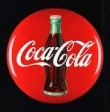
When did you last check your brand imagery and how consistently you are projecting your business to customers and stakeholders? Have you done a complete audit of all your “touch points”? Who in your company has the authority to enforce standards?
Large corporations have entire departments looking after how the image they present visually. They have realised the value created by consistent repetition of the company brand marks alongside the product or service it delivers.

Most businesses fail to present themselves as professionally as big brands and end up with a brand “look” that has more in common with a camel than a racehorse. This occurs organically, by allowing too many people to make piecemeal decisions every time something is needed.
There are so many pieces that make up the complete picture of your brand, from a new business card to printing a brochure or sending an email offer. Each is an opportunity to build brand “credits”, or a risk for someone to go off on a tangent.
A complete audit of all your brand “touch points” would cover:
• Internal signage
• Building signage
• Banners
• Vehicle signage
• Advertising
• Email signatures
• Website
• eNewsletter templates
• Fax formats
• Letterhead
• Business cards
• Presentation folders
• Flyers
• Sales force and sales kits
• Product sheets, warranty forms
• Order forms
• Invoices
• Branding on your products
• Point of sale
• Price tickets and notices
Setting brand standards with a professionally developed Style Guide
Brand guidelines (also called a Style Guide) should cover all of the things in the list, and have specific rules for each element. For instance, how your logo is used would cover these specifications:
Colours
• Print: CMYK or Pantone reference
• Digital: RGB
• Mono, reverse,
• Vector files for artwork production.
Size guidelines - how small can it still reproduce?
Usage guidelines - clear space, location on the page, hierarchy with other symbols.
A Graphic Designer with credentials in this area can produce your Style Guide.
Enforcing your brand style
Your creative agency can act as your deputy and arm you with a password protected online archive of logos, images, artwork formats and templates.
Many businesses also find having a professionally developed Style Guide available, as a reference document for staff and suppliers, helps enforce brand rules making it easier to keep the company image under control.
Finally, someone qualified within your company needs the power to enforce the Brand guidelines. It is possible to mandate that all work using the company brand mark is approved by this person before it goes into production.
Success through consistency
Every business can benefit from designing formal brand “rules” so they can weave simple and consistent imagery through the company’s everyday operations. If you have a good product your customers will come to associate that product with your consistently delivered brand mark.
Read More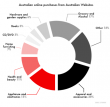
There’s more to ecommerce than GST
Funny how Harvey Norman and other retailers are running to the regulator with the sob story that they are losing sales to overseas online providers who don’t pay GST. Time for a reality check, they are losing sales because they are slow in changing their business models to keep up with consumer behaviour. 6 months ago I flagged the stats showing how quickly online sales were growing and the failure of our retailers to keep up with the trend.

Consumers reward innovation
It’s how Gerry Harvey made his first millions when, in his twenties, he founded the first category killer electrical discount store, Norman Ross. You don’t have to be young to be innovative; you just have to give consumers what they want in new and exciting ways. Today consumers increasingly are researching and shopping online. In a few years what they want will be something most of us have yet conceived, and more than likely Apple’s Steve Jobs, aged 55, already has in development.
Facebook keeps growing. So how can you make the most of it?
Facebook has broken through the 10 million barrier of active users in Australia*
While this will prompt many to jump in and increase advertising on Facebook from the current $12million a year, content is the cost-effective way any marketer can gain exposure to this increasingly significant audience. Best make sure it's the right kind of content.
Online content is King
When publishers and marketers say content is king, what exactly do they mean? Here’s an example close to my home. When I was 20 I played occasionally in a punk band called The Coathangers. Most nights we were lucky to get paid in free beer, the cover charge might be a couple of bucks. One night we had 6 bands for 69c. It was accepted that routine you played for little or no immediate return to build up an audience. Later you would then sell records to them, which was where the money was. Your loyal following paid for content.
Today you can’t expect to sell many CDs when everyone can download your content for free. My 21 year old son has a new band, The Psychonaughts. They hardly ever play live, they are busy recording, creating content that will more than likely be given away. In the not too recent past a band would build a website that fans would visit to purchase songs and buy merchandise. Not any more, people expect everything online to be free.
So what’s the value of giving away content online?
In the case of music, the content gets passed around and builds an audience, who then pay to see you perform live. Technology has turned the model upside down.
The ease with which people can share content across social media is a lesson for brands – we are now in an era where you have to produce content of value to your target audience, making it available for free. It then requires like-minded prospects to share it by whatever medium they choose: YouTube, mobile-to-mobile, email, or increasingly, Facebook.
According to Facebook regional vice-president A/NZ Paul Borrud, globally two-fifths of the more than 500 million Facebook users are accessing the site through their mobile. And Australians spend longer on the site than anyone else.
Unlike marketing via your brand site, or Google adwords, or banner ads or traditional mass media advertising and PR, the consumer isn’t being paid to publish your message. For content to be spread it isn’t enough to post brochure copy or press releases, content needs to be engaging stuff that your customer sees value in. And by aligning this free content with your brand story you can build a relationship with prospects stronger than an advertising approach could ever achieve.
So the art is producing content that is worthy of the attention of your audience, something they want to share.
* SMH.com.au 10/12/10

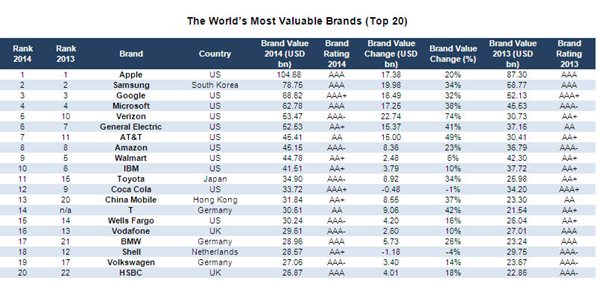
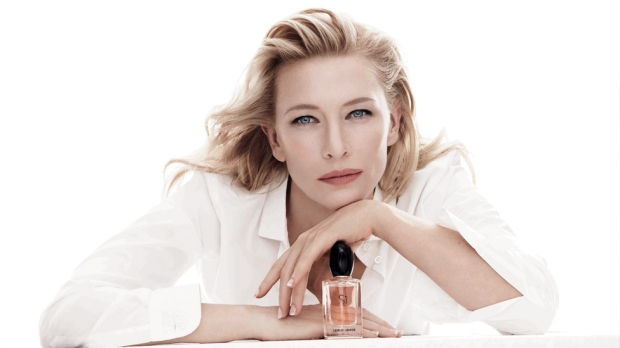



Scan the QR code for our contact details.
Download the Neoreader app.
© COPYRIGHT 2013 UNO marcomms Privacy